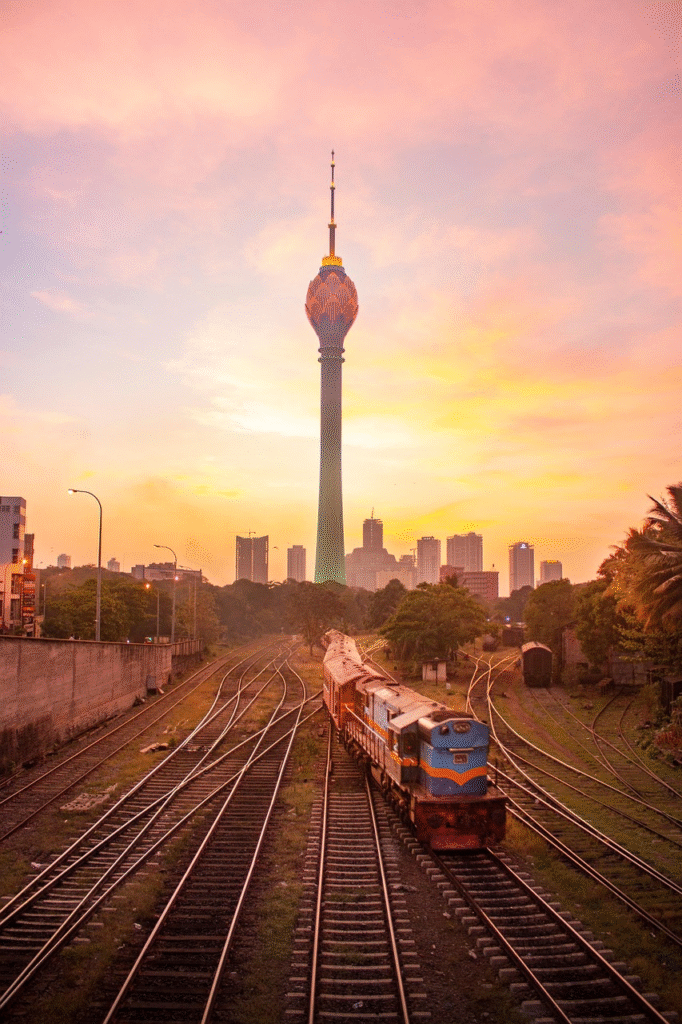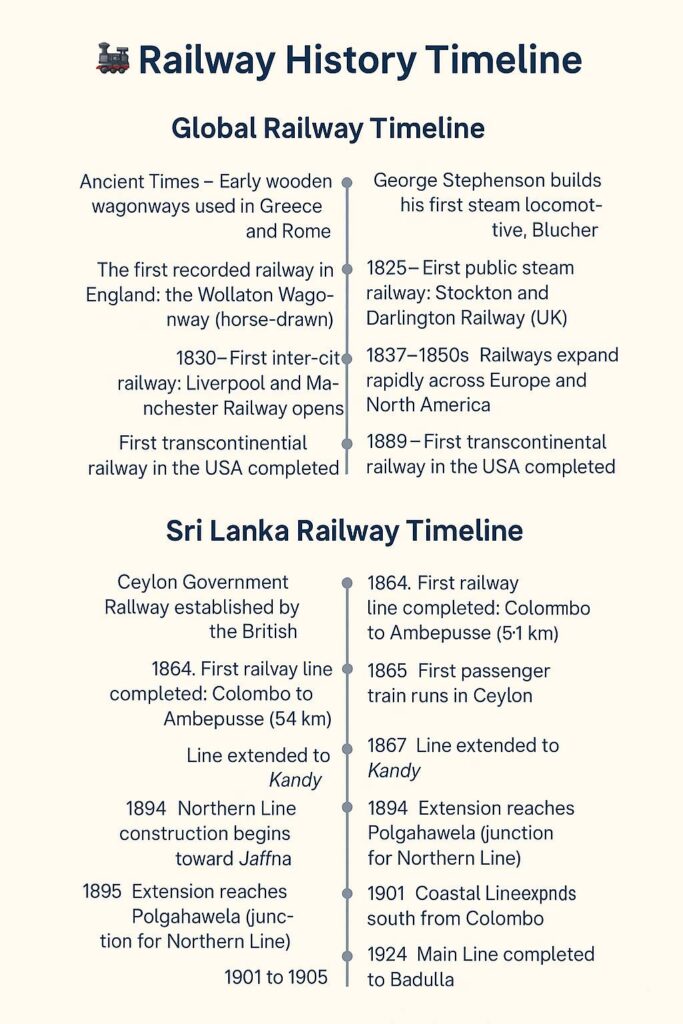Global Origins of Railways and Trains
The history of railways begins long before the invention of the steam locomotive. The earliest rail systems date back to ancient Greece and Rome, where wooden tracks were used to guide carts pulled by animals. These early “wagonways” laid the foundation for what would become one of the most revolutionary modes of transportation in human history.

The true transformation came in the early 19th century during the Industrial Revolution in Britain. The first full-scale working railway steam locomotive was built by George Stephenson in 1814. In 1825, Stephenson’s locomotive, called Locomotion No. 1, pulled the first public railway train on the Stockton and Darlington Railway in northeast England. This event is considered the birth of modern railways.
By 1830, Stephenson’s more advanced engine, the Rocket, ran on the Liverpool and Manchester Railway, the first inter-city railway line that operated scheduled passenger services with steam locomotives. This successful model of fast, reliable transport quickly spread across Europe, North America, and eventually the rest of the world.
The railway revolution transformed economies and societies. Goods could now be transported much faster and in larger quantities. Cities grew around railway stations. Timekeeping systems were standardized. And soon, railways became vital for national defense, trade, and travel.

The Arrival of Railways in Sri Lanka
The story of railways in Sri Lanka (then Ceylon) is closely linked to its colonial history and the British Empire’s economic interests in the island. Railways were introduced as a solution to a growing logistical problem: transporting coffee from the hill country to Colombo’s port for export.
The First Railway in Sri Lanka
The first railway line in Sri Lanka was opened on December 27, 1864. This line ran from Colombo to Ambepussa, a distance of 54 kilometers. The project was overseen by the Ceylon Government Railway, established in 1858 under the guidance of British engineers.
The inaugural train was pulled by a steam locomotive named “Leopold”, and the first passenger train ran on January 26, 1865.

Expansion and Development
After the success of the Colombo–Ambepussa line, the railway rapidly expanded to connect major agricultural and plantation areas with the capital:
- 1867 – Extension to Kandy, making it possible to move tea and coffee from the hill country.
- 1885 – Line extended to Nawalapitiya and eventually to Badulla in 1924, known today as the Main Line.
- 1894 – The Northern Line began development to connect Colombo with Jaffna and the northern peninsula.
- 1901–1926 – The Coastal Line reached Matara, and other branch lines like the Kelani Valley Line, Puttalam Line, and Batticaloa Line were constructed.
By the 20th century, Sri Lanka had one of the most scenic and efficient railway systems in Asia.

Sri Lanka Railways Today
Now called Sri Lanka Railways, the railway system remains a key part of the country’s transport network. Although the original steam engines have largely been replaced by diesel and electric locomotives, the charm and legacy of the railway live on.
Trains like the Ella Odyssey and the Udarata Menike continue to attract thousands of local and international passengers, offering breathtaking views of tea estates, misty mountains, and tropical forests.
The Sri Lankan railway is not just a means of transport—it is a living museum of history, culture, and engineering. In recent years, there have been efforts to modernize the system, restore old stations, and improve connectivity across the island.

Conclusion
From its origins in 19th-century England to its establishment in colonial Ceylon, the railway has played a vital role in shaping modern Sri Lanka. What began as a way to serve colonial plantations has evolved into a symbol of national heritage, progress, and unity. As Sri Lanka moves into the future, its railways remain a powerful link between its past and present—a journey that continues to inspire.
Images By Chathura Anuradha
Article Research by Sri Maal Samaraweera